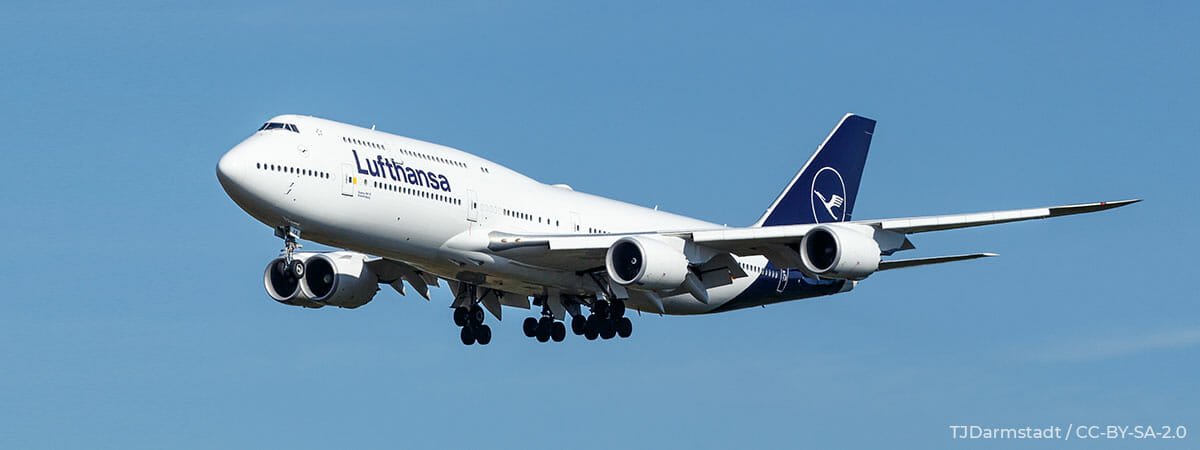As we all know, nature is a source of reference and inspiration for finding solutions to technological problems that we face on a daily basis.
Can you imagine a shark with wings? Obviously it is something that is far from reality, but what is certain is that the skin of the king of the oceans can be key in aeronautics to reduce aircraft fuel consumption thanks to greater efficiency.
But before going into detail about how this idea would be possible, we must understand what is special about sharks and their rapid movement in the aquatic environment.
The imitation of shark skin on aircraft surfaces can mean a significant reduction in drag and, consequently, an increase in efficiency.
The first thing that stands out is their aerodynamic shape, which is common to the rest of fish. It allows them to move very quickly with a minimum expenditure of energy. But in the shark’s case, the secret to being the fastest lies also in its skin. Not surprisingly, the fastest aquatic species in the world is the mako shark (or shortfin mako) which can travel up to 124 kilometers per hour.
Surely you have seen many sharks in photos or videos, but to understand how its skin helps it to be so fast you have to put it under the lens of a microscope. Paradoxically, the same skin that helps you move faster when moving through a fluid turns out to be very rough to the touch. It’s very similar to the feeling you’d get if you stroked sandpaper. This is because they are not scales like the conventional ones that we can see in any other fish, but are tooth-shaped plates.
The “placoid” scales of sharks have a striking feature: fine raised ridges, or “ribs,” along each scale. These ribs are aligned in such a way that they form small ridges that run lengthwise down the shark’s body. Although the ridges are only a few micrometers long, they have been shown to reduce drag as the shark swims, allowing it to swim faster using the same amount of power.
Similarly, it has been shown that sharks that swim more slowly due to the needs of the environment in which they live, have fewer ridges on their elongated and pointed scales.
The study of shark skin began in 1970 by German paleontologist and evolutionary biologist Wolf-Ernst Reif. Reif emphasized the reduction in resistance to flow produced by shark scales. Ultimately, almost half a century later, a promising path has been laid with the application of this technology in aeronautics.
The path has not been easy; prototypes have been tested with different materials and positioning of the denticles; 3D printers have been of great help, as they have enabled the project to offer reliable conclusions.
In the most recent studies, laboratory reproductions of shark skin has yielded very clear data: drag or friction with the surrounding fluid is very clearly reduced.
In an experiment carried out at Harvard University, researchers arrived at the conclusion that with this structure, an increase in speed of up to 6.6% can be achieved while reducing the energy required to achieve it.
To reach this conclusion, they glued samples of an artificial shark skin to both sides of a flexible sheet. The idea was that the sample could stay still in the middle of a flow of water or simulate the movement of a shark. Next, they measured the forces exerted alternately on the stationary and moving sheet.
The result was that the imitation shark skin reduced drag by 8.7% when the water was flowing at low speed. At a higher flow rate, shark skin produced 15% more resistance than a smooth membrane. However, when the sheet began to move simulating the movement of a fish during its displacement, the performance of the shark skin improved significantly, increasing speed by 6.6% with a reduction in energy expenditure of 5.9 %.
It could be said that it decreases the resistance to the advance of its body, by making it difficult for the fluid that surrounds it to adhere to the surface of its skin due to the space between each denticle.
For this reason, the initial studies on this animal generated a lot of expectation in relation to its potential applications. Its main characteristics were revealed more intensely after studies conducted at the universities of Harvard (Cambridge) and Emory (Atlanta), which included:
- Friction reduction,
- Speed increase,
- Reduction of energy expenditure.
The first relevant applications of designs that emulated shark skin were swimsuits used by professional swimmers. Such were the spectacular results obtained during the 2008 and subsequent Olympic Games that it led to the banning of certain types of fabrics in these competitions.
But its evolution did not stop there, since, from the beginning, the enormous possibilities offered by this technology for the naval and aeronautical industries were clearly noted.
Focusing on the latter, the German airline Lufthansa was the first to bet seriously on this technology.
In 2019, the first tests were carried out on part of the fuselage of a Lufthansa Boing 747-400, obtaining as a result a reduction in friction on the airplane of up to 0.8%.
It could seem irrelevant, almost imperceptible. But if we consider the number of hours that an aircraft is operational, the calculations translate into annual savings of many tons of fuel. This would not only have a positive impact on the economy of any airline, but also on the reduction of the carbon footprint, an essential subject for the coming decades both in aeronautics and in other industries.
After the hiatus of the coronavirus pandemic, research continues to expand this technology to the rest of the parts of the plane and other aircraft models. The world’s major manufacturers also have on-going projects in this sense.
Large amounts of fuel would be saved if it were feasible to extend this technology to the entire aeronautical fleet. This would be one more step toward reaching the milestone of reducing the aeronautical carbon footprint to zero by the year 2050.
Although there is still a long way to go to further develop this research, the results allows us to be optimistic about the future, with airlines being able to improve their economies while advancing toward the decarbonization of the aviation industry. Something that could be classified as a total “win to win”.

A few months ago, Lufthansa Technik shared a video explaining some of the features and advantages of this proposal to improve aircraft efficiency. You can see it by clicking here.


